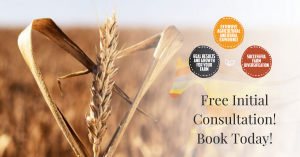

This is a question that comes to us from clients almost constantly it’s probably the most frequently asked question when we’re at trade shows or doing talks or anything along those lines. Many people believe that if you are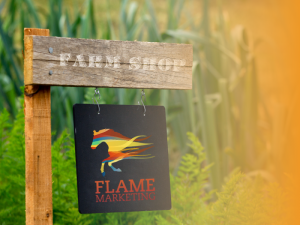 starting a farm business you automatically must have a website and the truth is this isn’t always the case. The key is whether the website will benefit your farm brand, there is no point in spending hundreds or even thousands of pounds on a website if it is not going to generate you a return on investment.
starting a farm business you automatically must have a website and the truth is this isn’t always the case. The key is whether the website will benefit your farm brand, there is no point in spending hundreds or even thousands of pounds on a website if it is not going to generate you a return on investment.
If the purpose of your website is to raise awareness for the farm brand, then you need to make sure that people are finding the website. If the objective is to sell products, then once again people must be able to find your website in the same way they would need to be able to find your shop. So, the first question you need to ask yourself when considering if you need a website for your farm brand is to consider what the website is going to bring to your business. What is its purpose?
If you are intending to sell products online then a website needs to have E-Commerce capabilities this will have an impact on the type of website that you choose and who can build it for you. If your farm diversification project includes something like glamping, then you might be looking to create a website where people can make bookings. If people are making bookings directly through the website that involves a certain level of capability but if you’re just using the website to advertise the place and bookings need to be made via email or phone call then you might not need the website.
How do I get traffic to my website? This is probably the second most asked question about websites that we receive. There are multiple ways to get traffic to your website, but the key thing is you need to ensure that the traffic that you get to your website is also traffic that is going to convert into sales. There is no point in having hundreds of thousands of people clicking onto your website if none of them buy anything from you or book a holiday with you or decide to visit the farm. These are some of the tools you could use to get people to visit your website:
traffic that you get to your website is also traffic that is going to convert into sales. There is no point in having hundreds of thousands of people clicking onto your website if none of them buy anything from you or book a holiday with you or decide to visit the farm. These are some of the tools you could use to get people to visit your website:
Now let’s talk about the pros and cons of each of some of the methods above. Firstly, social media traffic in the form of referral can have quite a high conversion rate as if people are following you on social media and they are likely to be interested in your product. The problem is whether your social media is pitching to the right people. If your social media content is well-researched and focuses on your ideal client then this source of traffic is likely to convert when they reach your website. However, it begs the question of whether you could make the sale without the person having to leave the social media platform they are on for example through Facebook shops.
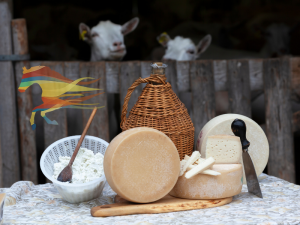 Google ads are another common choice for people who are new to having a website. Google ads are often promoted by many online providers as the saving grace of small businesses. The problem is by doing Google ads you’re having to compete with lots of businesses to achieve the position that you’re looking for. Google ads rely on a bidding system so if you have a very unusual product that you know your customers are going to be searching for then Google ads may be useful in jumpstarting the traffic going to your website. However, there’s a good chance that the search terms you’re using are fairly common, for example, glamping. For these terms, there is going to be a high level of competition for that search term and therefore you’re likely to be out-bidded, and you don’t have any control over what someone else is bidding it’s like a silent auction with Google ads.
Google ads are another common choice for people who are new to having a website. Google ads are often promoted by many online providers as the saving grace of small businesses. The problem is by doing Google ads you’re having to compete with lots of businesses to achieve the position that you’re looking for. Google ads rely on a bidding system so if you have a very unusual product that you know your customers are going to be searching for then Google ads may be useful in jumpstarting the traffic going to your website. However, there’s a good chance that the search terms you’re using are fairly common, for example, glamping. For these terms, there is going to be a high level of competition for that search term and therefore you’re likely to be out-bidded, and you don’t have any control over what someone else is bidding it’s like a silent auction with Google ads.
It’s sort of the equivalent to renting your farm machinery rather than buying it. So you’re paying google every month for ads that bring in sales, but the sales are unlikely to be much more than the worth of the ad spend. Whereas you might be better off investing in SEO where you’re improving the website itself, therefore that’s a one-off cost rather than that ongoing investment. In the long run, you will find that it’s a really expensive process and if you stop doing it your traffic will just cease so you become reliant on it.
Paid social media advertising sits between organic social media, where you don’t pay, and Google ads. The benefit is that Facebook and other platforms tend to be quite clear about the results that you can get from your ad spend. You can also make quite a big impact for a fairly limited ad spend as long as you have your targeting right. We will be doing a whole blog about Facebook advertising, so I’d recommend checking back for that one in the future.
But the key takeaway is you’re still having to spend money each time you do it to gain those sales. And once again this is only effective if your Facebook advert is correctly targeted and it resonates with that ideal customer otherwise those customers are going to land on your website and just bounce away because they’re not interested in the products that you’re selling. In general, social media advertising is useful when we’re focusing on specific promotions or sales or things like that I wouldn’t recommend it as an ongoing blanket approach to gain sales.
otherwise those customers are going to land on your website and just bounce away because they’re not interested in the products that you’re selling. In general, social media advertising is useful when we’re focusing on specific promotions or sales or things like that I wouldn’t recommend it as an ongoing blanket approach to gain sales.
So now we’re at direct traffic, this is where someone has taken the time to type in your actual URL and has then followed the link to your website that way. Now, this is great, if someone bothered to type in your URL they are likely to be highly invested in purchasing your product very interested. Direct traffic is likely to have a high conversion rate, the problem is that very few people bother to do that. Also if you’re a small or new business people are unlikely to know your brand name and be able to search for you that way.
Finally, we come to the really scary topic, SEO, search engine optimization, lots of people are terrified of this phrase. They think it’s completely black magic and they also think that it costs the absolute earth but it doesn’t have to. To achieve good results with SEO for small businesses you need to think about how you can target your product in a highly specific way so that you aren’t competing against huge brands based on the search terms they would use. For example, a phrase such as ‘’lamb meat’’ might have a high search volume but it’s going to be hard to rank on that. However, a phrase like ‘’Shetland hogget meat’’ is much more specific and you’re targeting a much more niche market therefore you’re likely to be able to get higher on the search terms more quickly. You’re also more likely to attract customers who are specifically looking for your product and are willing to pay that bit more for it.
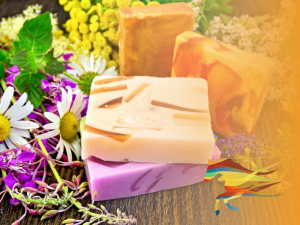 SEO is key to not only getting traffic to your website but also ensuring that that traffic comes from your ideal customers. Customers who are most likely to make purchases with you, customers who are also likely to be good customers who are going to continue to come back and are going to advocate for your business. The first step in having an SEO plan for your website is to consider the keywords and phrases that your customers will use to find you. To ensure you choose the right words and phrases you need to make sure you have a clear understanding of who your ideal customer is. The more targeted you can visualise that customer, the easier it’s going to be for us to think about what keywords and phrases they might use when searching for your product online.
SEO is key to not only getting traffic to your website but also ensuring that that traffic comes from your ideal customers. Customers who are most likely to make purchases with you, customers who are also likely to be good customers who are going to continue to come back and are going to advocate for your business. The first step in having an SEO plan for your website is to consider the keywords and phrases that your customers will use to find you. To ensure you choose the right words and phrases you need to make sure you have a clear understanding of who your ideal customer is. The more targeted you can visualise that customer, the easier it’s going to be for us to think about what keywords and phrases they might use when searching for your product online.
We also want to make sure that we have a high enough number of searches per month to ensure you get a good amount of custom. That number will depend on how many sales you need to make a month to have a sustainable business. For example, if you sell a high-value item, such as glamping holidays, then each unit will be worth a considerable amount, therefore you can sell less of them per month to have a good income compared to say a veg box business. If you are a glamping site you probably only need somewhere between 5 and 15 sales per month to be comfortable in that business and have a good level of income coming in. So, you could choose a search term which is only searched for say 50-100 times a month, this is going to be more than ample for your business. However, if you are selling a lower value item like a veg box then you might need to choose a search term that has a higher search term value per month maybe 500 times per month.
It is likely that the higher the search volume per month the higher the level of competition for that product which is why we try to niche down your product to pick the search terms which large competitors are unlikely to be using and to ensure that we’re reaching that ideal niched client rather than the general population.
Once you have your keywords it’s about using those throughout the website. This used to be a case of just spamming the keywords all-around your site. But Google’s got cleverer since then, now it’s about being tactical with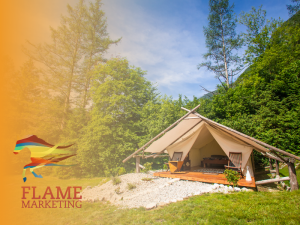 where you put those keywords make sure they are in the alt tags, make sure they are in meta tags, make sure they are in all of your headings, and that your headings are using things like H1 at the back end of your website. Now if all of that starting to sound like gibberish, I would recommend speaking to someone about your SEO and seeing what they can do for you. Trying to do it yourself if you’re not confident editing the back of your website is likely to cause more harm than good.
where you put those keywords make sure they are in the alt tags, make sure they are in meta tags, make sure they are in all of your headings, and that your headings are using things like H1 at the back end of your website. Now if all of that starting to sound like gibberish, I would recommend speaking to someone about your SEO and seeing what they can do for you. Trying to do it yourself if you’re not confident editing the back of your website is likely to cause more harm than good.
One of the best things you can do to add traffic to your website through SEO is to use blogs, ideally your blogs need to answer some of the common search questions that your customers are looking for. For example, if your customers want to look at going glamping but maybe aren’t sure about the pros and cons of glamping versus being in a B&B, that could be a perfect blog topic you could write. Understanding what those phrases and questions are, do take research and time, that might be time and research skills that you do not have which is where someone who provides that service can be of use to you. At flame marketing, we provide SEO services through one of our expert consultants. In fact, we think that SEO is so in that we have built it directly into our hero package Firestarter.
Good quality SEO search not only improves your website and allows you to write blogs that are targeted to your ideal customer, blogs that are likely to be read. It also helps to inform what you should be talking about on your social media marketing. For example, when we write a blog for a client that is based on SEO research, we will write a blog which is maybe 1000 words, we will then break that down into between 2 and 5 social media posts covering the same sort of content but in small nuggets. We might also use that as part of an email marketing campaign, so you are getting multiple benefits from that one piece of focused copywriting.
 One of the biggest mistakes that farmers make is to go to the cheapest and 1st web developer they can find. These people will often provide a website that has limited functionality, no built-in SEO, and will in the long run end up costing your agri-business more money as you try to adapt it to have better functionality. If you have had your website built on a builder platform like Wix you are not able to move that website to another platform easily, you would most likely have to completely rebuild your website when you run out of functionality on that platform.
One of the biggest mistakes that farmers make is to go to the cheapest and 1st web developer they can find. These people will often provide a website that has limited functionality, no built-in SEO, and will in the long run end up costing your agri-business more money as you try to adapt it to have better functionality. If you have had your website built on a builder platform like Wix you are not able to move that website to another platform easily, you would most likely have to completely rebuild your website when you run out of functionality on that platform.
If you’re a small business that platform might be serviceable for a short period of time but, you will need to prepare for the upfront cost of rebuilding the website at a later date. Therefore, if you can afford to it’s always better to try and build a better website at the start so that it’s future proof and you can extend it and improve it over a period of time rather than having to start from scratch.
Once again there is no point in having a website if no one can find it. Therefore, if you are spending money having a website build please try to invest in some SEO during the build phase. It is much easier to create an SEO structure and implement it while the website is being built than trying to correct it retrospectively. To find out more book a free consultation with us today.
